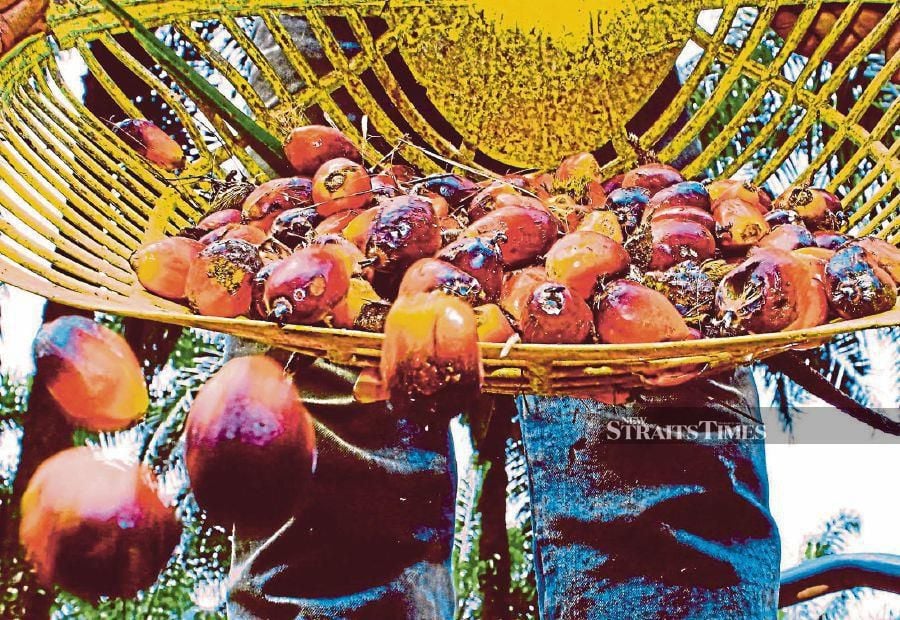IN Malaysia, palm oil production has reached its limit in cultivated areas. The limit is about six million hectares. As the country commits to the policy of maintaining at least 50 per cent forest cover, there is no more room to expand palm oil production.
Researchers are working hard to improve palm oil yield to increase the country's output which has stagnated around 20 million tonnes. Though going by a theoretical estimate, the palm oil yield can go as high as 17 tonnes/hectare/year, the nation's average has been hovering around 4 tonnes of oil/hectare/year.
The Malaysian Palm Oil Board (MPOB) has been researching to generate new higher-yielding planting materials. Not only through the traditional breeding techniques but increasingly by deploying biogenetic approaches. There has been some success. But, the challenge remains.
What is more disturbing is the shortfalls in oil recovery from the current planting material. There are two major contributors to this. One is the lack of labour to harvest, where the industry has experienced a severe crisis lately. It started during the Covid-19 pandemic when many foreign workers left for their home countries. Many did not return.
The other is the current harvesting practice which gives a high percentage of unripe fruits. Some estimates suggest that there may be up to 30 per cent oil loss that way. Billions of ringgit in revenue were lost. Harvesting involves hard work. It is classified as difficult, dirty and dangerous or 3Ds. Local labour often shies away.
Dependence on foreign labour is inevitable. Not all foreign workers can effectively harvest oil palm. Only workers from Indonesia are found to be most efficient.
But as Indonesia expands her oil palm cultivation, fewer Indonesian workers are available. Workers from other countries cannot match the productivity level of Indonesians.
There have been many attempts to mechanise. But they have not met with much success. Often the cost is too prohibitive. Many have offered new untried ideas. But one worth experimenting with involves a completely different technique.
According to the researcher, no bunch-cutting is necessary. However, the technique must be validated by the appropriate field trials. What is guaranteed is that all fruits harvested are 100 per cent ripe.
This means the oil losses may be reduced to almost zero. The decision to harvest is no longer based on loose fruits on the ground. The other attraction of the technique is that all able-bodied workers can perform the operation.
Workers from Bangladesh and Nepal who now struggle to match the Indonesian workers' productivity level can harvest efficiently. The industry should seriously consider this.
The other attraction of the proposed technique is the cost reduction in oil milling. The needed sterilisation capacity is much reduced. This would also reduce the water usage in the mill which means a lower volume of POME (palm oil mill effluent), reducing the cost to treat the effluent.
More importantly, the oil losses due to labour shortage and the high percentage of unripe fruits harvested will be resolved. There is some element of mechanisation involved. However, it is much less complicated than the attempt to mechanise the existing harvesting technique.
Compared with all other ideas of using drones and robotics, the proposed technique is simpler. The engineer who came up with this idea is looking to develop the technique into a full-scale commercial operation. The palm oil industry should give it serious consideration.
The palm oil industry has spent many years and much funding to mechanise the harvesting operation. It has met with limited success. Even recent attempts to deploy digitalised drones have yet to satisfy the industry.
A major obstacle is the prohibitive cost.
The losses in revenue from the oil losses over the years remain disturbingly high. It is tolerable when palm oil prices are high. But during periods of low prices, which have hit the industry in the past, such losses have meant a lot, especially for the small farmers. The proposed new way of harvesting, which promises better oil recovery and reduced dependence on skilled labour, is worth a study.
The initial assessment shows the cost is much reduced. It is time for the palm oil industry to give due consideration to this simple technique which promises a major transformation.
The writer is a professor at the Tan Sri Omar Centre for STI Policy, UCSI University



